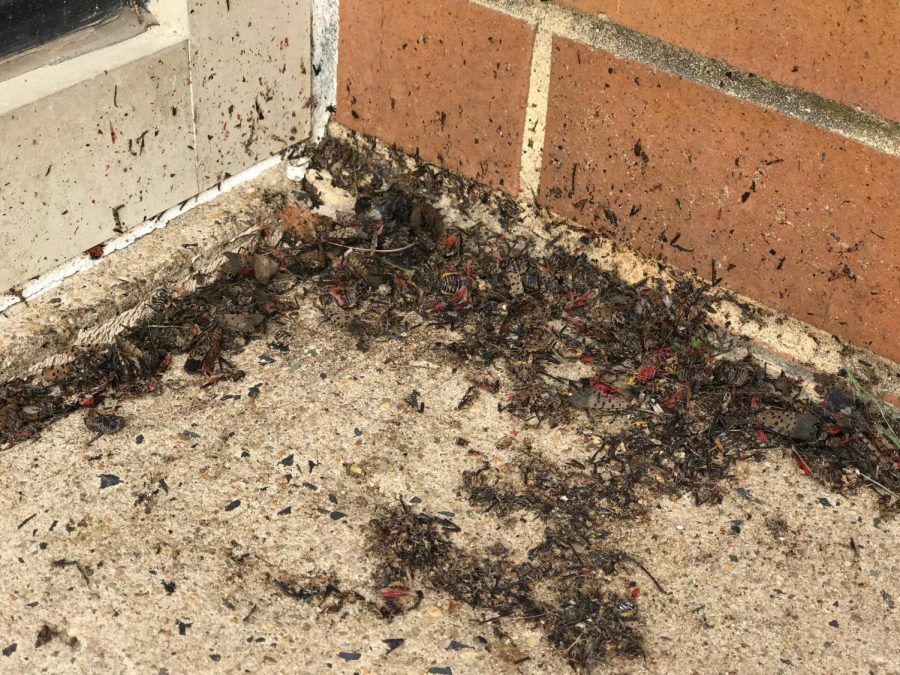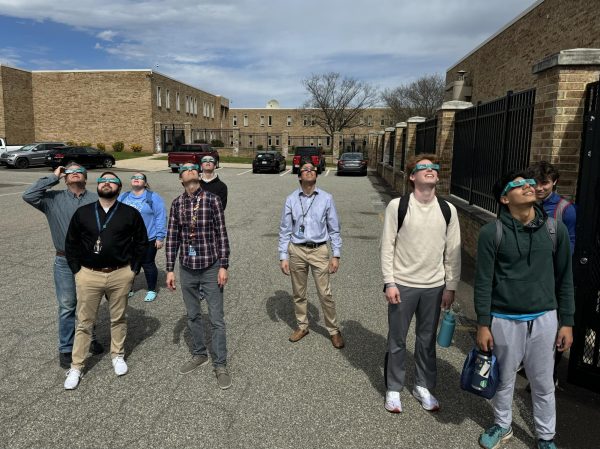Spotted lanternflies invading PA
A cluster of dead spotted lanternflies are found outside of the high school.
Walking up the steps to North Penn High School, there’s a graveyard full of bugs that look like a combination of a butterfly, a ladybug, and a moth.
But what are they?
They’re called spotted lanternflies.
Native to China, India, and Vietnam, the spotted lanternfly (Lycorma delicatula) was discovered in Berks County, Pennsylvania on September 22, 2014. It supposedly came on board to Pennsylvania with some sort of shipment. As of recently, the quarantine includes 13 counties in Pennsylvania and the detection continues to expand in other states surrounding it.
The adult spotted lanternflies, which we are more familiar with, have grey wings with black dots but reveals red back wings when it opens. Their life cycle starts in September to December where they begin to lay their eggs which stay as eggs from October to June. Then, they hatch and go through three stages of development from May to September. From July to September they reach their fourth stage and finally become adults.
Through the process of them developing to an adult, where they reach the ability to fly, the development process can speed up if they’re exposed to warmer places like our homes. Although a situation like that has not occurred or has not been detected yet, we should still be aware of how that could affect us.
The lanternflies are an invasive species because they feed on plants reducing photosynthesis which leads to killing the plant. They mostly prefer Ailanthus trees (tree of heaven) which is not a problem because they’re also invasive. But they also feed on grape vines, walnuts, pine trees, and rosaceae stone fruits. While they eat, they release honeydew, a sugary substance. This creates mold on the plant and can also kill the plants.
Although there’s not much we can do to completely remove them, we could still try to prevent some from coming. If you see them anywhere, be sure to step on them. The less we have, the better.
Sources Used:
https://www.lehighvalleylive.com/news/index.ssf/2018/09/11_things_you_can_do_to_help_f.html
https://invasiveinsectsolutions.com/spotted-lanternfly-faq
https://extension.psu.edu/spotted-lanternfly
https://fox43.com/2018/09/25/heres-everything-you-need-to-know-about-the-spotted-lanternfly/
https://www.dontmovefirewood.org/pest_pathogen/spotted-lanternfly-html/
https://forestinvasives.ca/Meet-the-Species/Insects/Spotted-Lanternfly#73246-impacts
https://www.yardcare.life/important-information-about-spotted-lanternfly/












Rion • Oct 23, 2018 at 8:39 am
The eggs look like mud and are usually found on the side of trees, so if you find some at home, take it off and put it in a bag of rubbing alcohol or something similar.